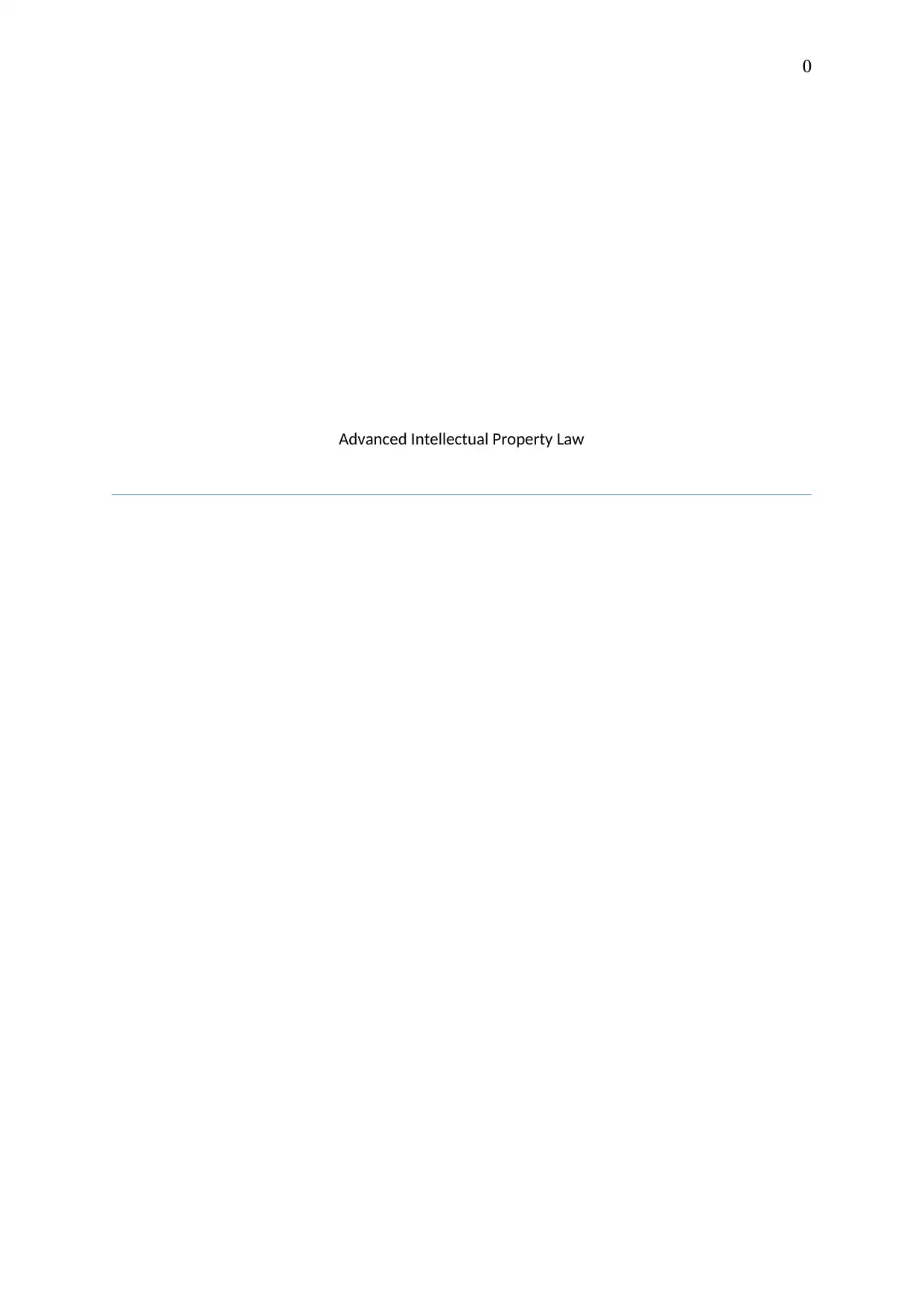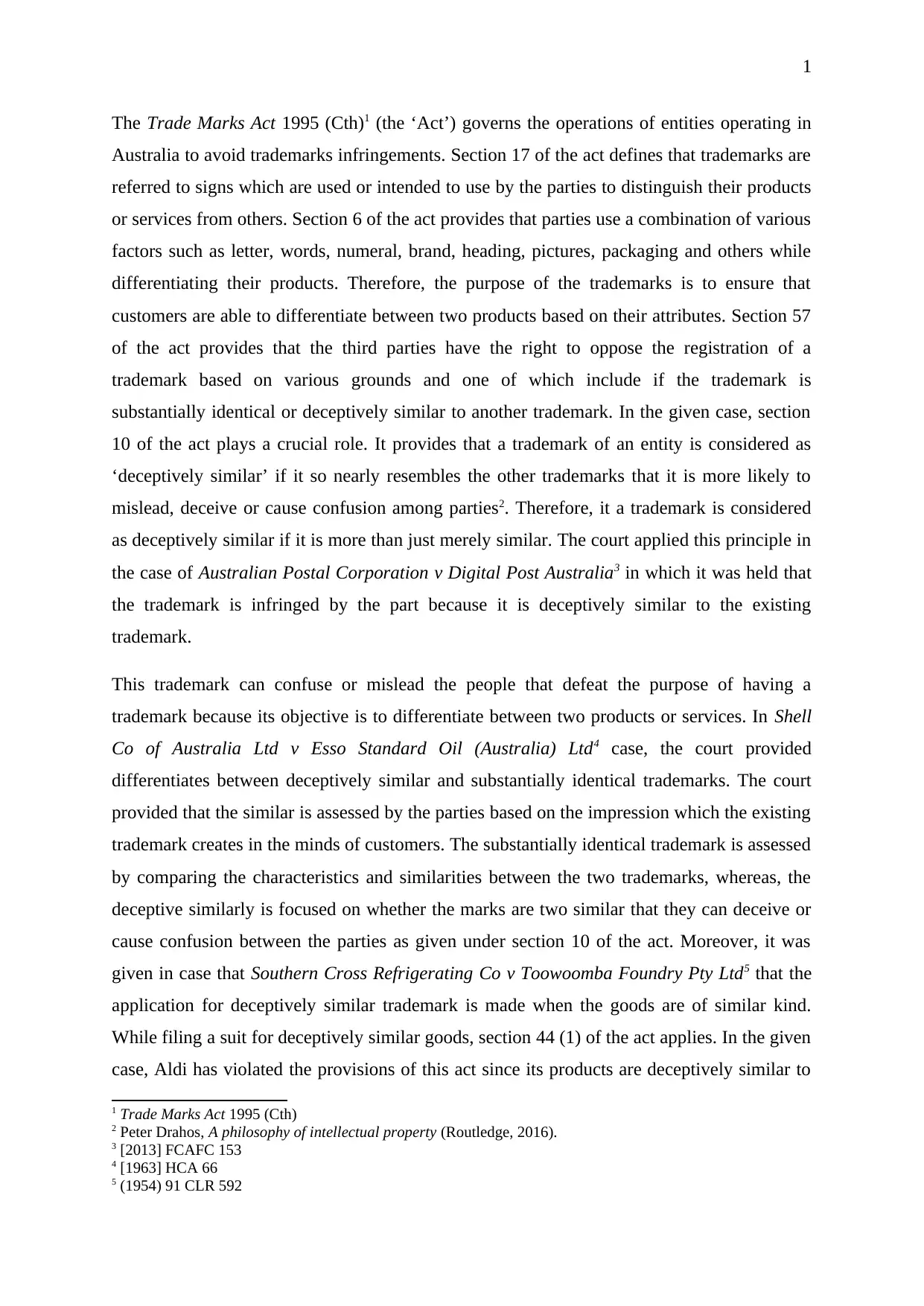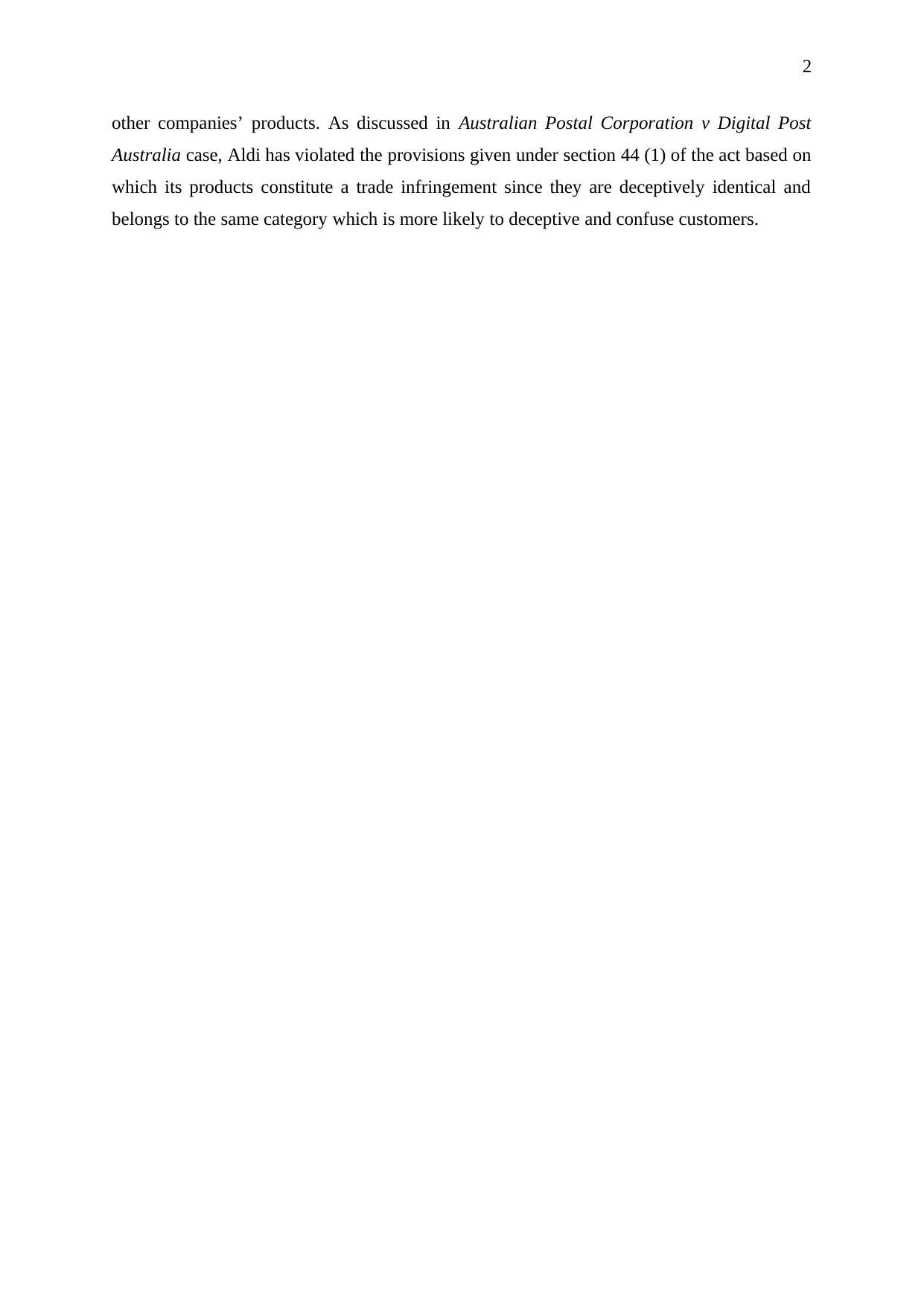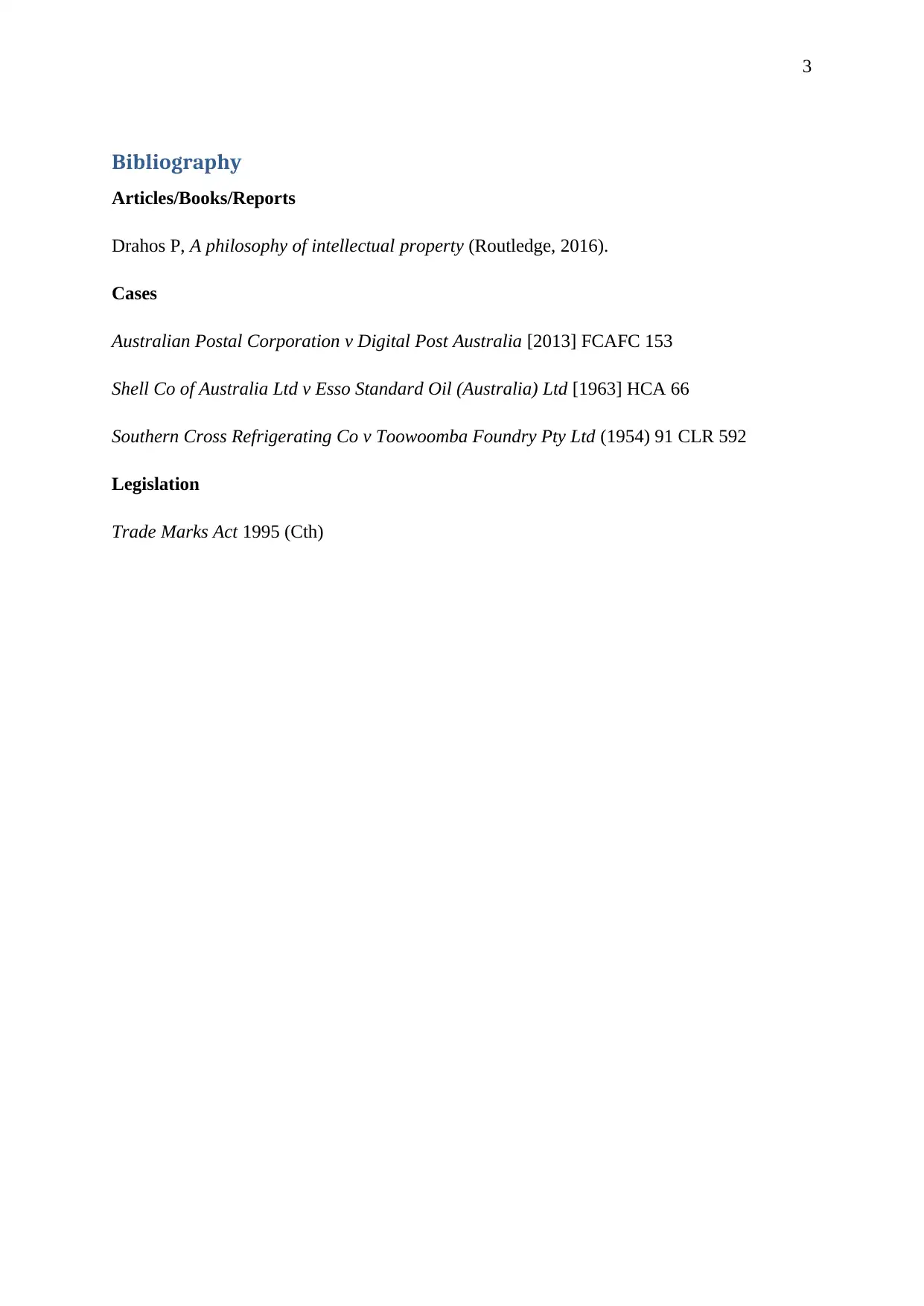Advanced Intellectual Property Law: Trade Marks Act 1995
VerifiedAdded on 2023/06/05
|4
|662
|183
Report
AI Summary
This report provides an analysis of the Trade Marks Act 1995 (Cth), focusing on trademark infringement and deceptive similarity. It defines trademarks under section 17 and explains the concept of deceptively similar trademarks as per section 10 of the Act. The report examines the application of these principles, referencing cases such as Australian Postal Corporation v Digital Post Australia and Shell Co of Australia Ltd v Esso Standard Oil (Australia) Ltd, to differentiate between deceptively similar and substantially identical trademarks. The report also discusses the implications of section 57, regarding the right to oppose trademark registration, and section 44(1) concerning deceptive similarity. The analysis concludes that Aldi's products may violate the Act due to deceptive similarity to other companies' products, potentially leading to trademark infringement. The report includes a bibliography of relevant articles, cases, and legislation.
1 out of 4










![ASIC v Narain [2008] FCAFC 120: A Corporations Law Case Report](/_next/image/?url=https%3A%2F%2Fdesklib.com%2Fmedia%2Fimages%2Fff%2F9e6e393bd1de4ddeaae366f8e3aa83e2.jpg&w=256&q=75)
![[object Object]](/_next/static/media/star-bottom.7253800d.svg)